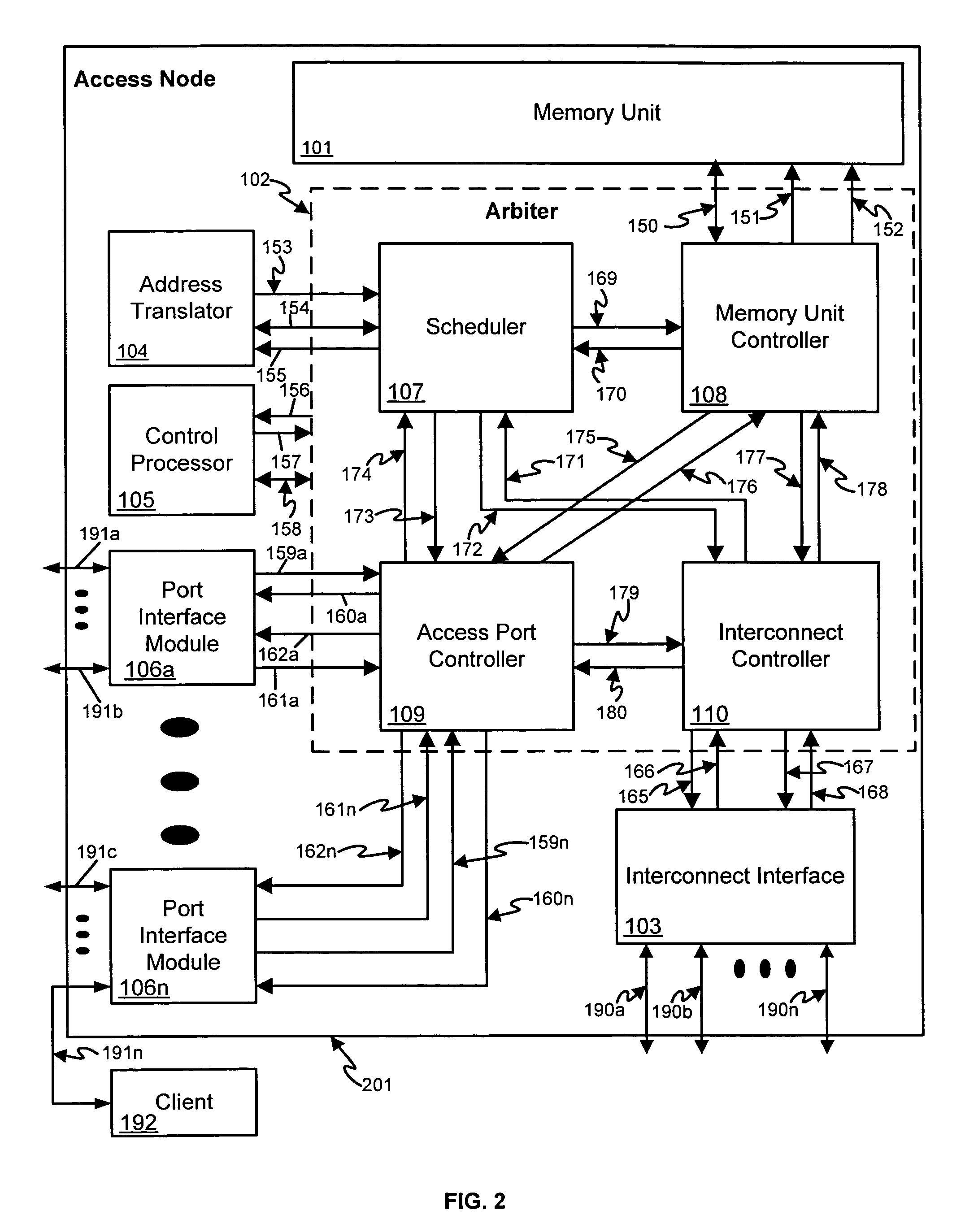Data access and address translation for retrieval of data amongst multiple interconnected access nodes
a data access and address translation technology, applied in the field of storage memory system, can solve the problems of limited access to data from the hard disk, indeterministic access latency, and inability to manage access to data using conventional techniques, and achieve the effect of allowing storage capacity and interface port count to be separately scaled and greater storage capacity
- Summary
- Abstract
- Description
- Claims
- Application Information
AI Technical Summary
Benefits of technology
Problems solved by technology
Method used
Image
Examples
Embodiment Construction
[0044]One aspect of the present invention is to provide a mass data storage system supporting a very fast transfer rate, extremely low latency access to random data, and deterministic access behavior. Such a system is useful in a variety of applications, e.g., general computing environments, but is particularly useful for highly utilized database tables, large file sizes, highly utilized file servers, and high-density streaming applications.
[0045]For example, one approach would be to vastly increase the size of the memory in a conventional computer system. The problem with that solution is that existing processors are limited to the size of the address bus, and as such, can not address the vast amount of memory in a timely manner. Another potential drawback to just adding memory to the processor is memory fragmentation. Memory fragmentation occurs as objects of one size are deleted from memory and replaced with objects of a different size. The processor spends much of its time decid...
PUM
 Login to View More
Login to View More Abstract
Description
Claims
Application Information
 Login to View More
Login to View More - R&D
- Intellectual Property
- Life Sciences
- Materials
- Tech Scout
- Unparalleled Data Quality
- Higher Quality Content
- 60% Fewer Hallucinations
Browse by: Latest US Patents, China's latest patents, Technical Efficacy Thesaurus, Application Domain, Technology Topic, Popular Technical Reports.
© 2025 PatSnap. All rights reserved.Legal|Privacy policy|Modern Slavery Act Transparency Statement|Sitemap|About US| Contact US: help@patsnap.com



